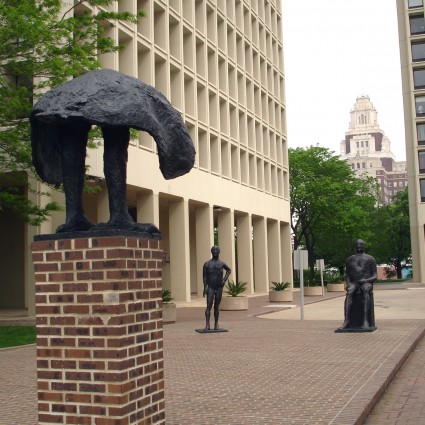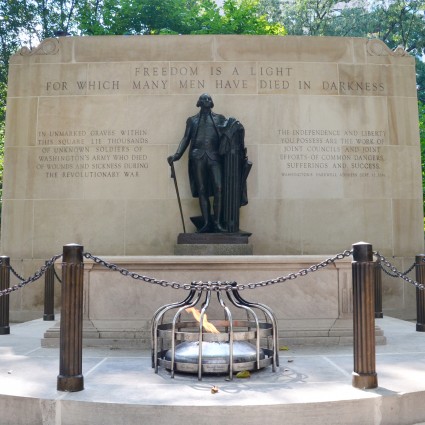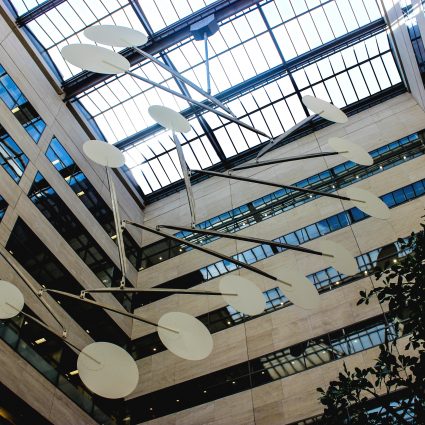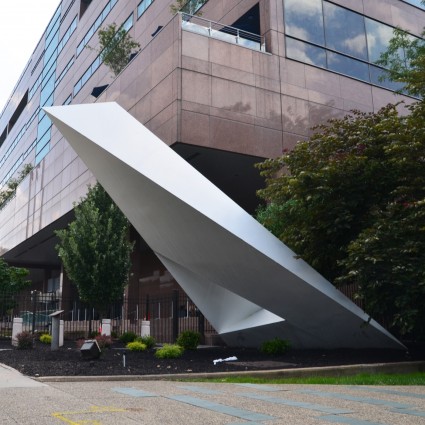At A Glance
Artist Barbara Neijna created a complete visual environment of sculpture, trees, flowers, ornamental paving, and lighting
The artwork relates the space both to the architecture of the city and to the park atmosphere of neighboring Washington Square
The sculpture consists of two principal arrangements and a number of smaller elements
When she was shown the blueprints for the Independence Place towers, artist Barbara Neijna conceived an artwork far more ambitious than the “central pedestal sculpture” that had originally been envisioned for the 1% Redevelopment Authority Percent for Art requirement.
All of the elements are painted a stark, brilliant white, creating a unity from apparent diversity.
For the plaza at the main entrance to the complex, she created a complete visual environment of sculpture, trees, flowers, ornamental paving, and lighting. The idea, she explained, was to relate the space both to the architecture of the city (specifically the Society Hill area) and to the park atmosphere of neighboring Washington Square. The sculpture would include “majestically scaled” forms as well as forms of a more human size.
The sculpture consists of two principal arrangements and a number of smaller elements. On a low platform in the plaza’s center stand a tall column of cylinders, a square wall, and an arch linked to a low curving wall with a column that supports a thin form reminiscent of a curved lamppost. At the condominium entrance rises the second major assemblage of shapes, including an arch over the doorway and columns supporting a drive-through portal. All of the elements are painted a stark, brilliant white, creating a unity from apparent diversity.
Adapted from Public Art in Philadelphia by Penny Balkin Bach (Temple University Press, Philadelphia, 1992).



